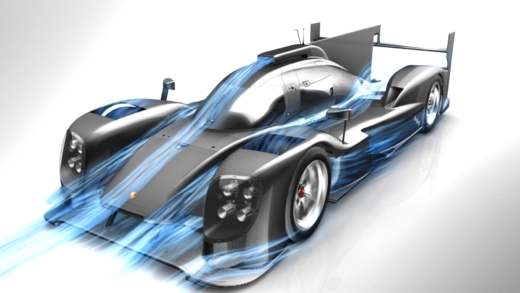Tire pressure is critical, especially in cold weather. When temperatures drop, tire pressure decreases, affecting vehicle performance and safety. Regular checks are essential to prevent issues such as blowouts and reduced traction. This article discusses the differences in tire pressure needs for summer and winter tires and what to do if the tire pressure light stays on after inflation.
What Causes the Tire Pressure Light to Come On in Cold Weather?
Tire pressure in cold weather is a common concern for drivers. When the temperature drops, the air inside your tires contracts, leading to a decrease in tire pressure. This is primarily due to the gas laws, where gases become denser as temperatures fall. As a result, the tire pressure light may illuminate on your dashboard.
Several factors contribute to this phenomenon:
- Temperature Drops: For every 10-degree Fahrenheit decrease in temperature, tire pressure can drop by about 1 PSI (pound per square inch).
- Humidity Levels: Cold air holds less moisture, which can affect the air pressure in your tires.
- Daily Temperature Fluctuations: If you drive at different times of the day, you may notice the tire pressure light coming on more frequently.
Understanding these causes helps you prepare for potential issues and maintain your tire pressure effectively during winter months.
How Does Temperature Affect Tire Pressure?
The impact of temperature on tire pressure is significant. As the temperature decreases, so does the air pressure within your tires. This relationship is crucial for maintaining proper tire performance. Cold weather can lead to a significant drop in PSI, which can affect traction and handling.
Here’s how temperature affects tire pressure:
- Cold Weather: In cold weather, tires can lose pressure quickly. Make it a habit to check your tire pressure regularly during winter months.
- Heat Expansion: Conversely, when temperatures rise, the air inside tires expands, increasing the pressure. This can lead to over-inflation if not monitored.
- Optimal Range: Tires typically function best between 30-35 PSI. Staying within this range ensures better fuel efficiency and safety.
Regularly checking tire pressure, especially in fluctuating temperatures, is essential for safe driving.
Why Is It Important to Check Tire Pressure Regularly?
Regular checks of tire pressure are vital for several reasons. Maintaining the correct tire pressure enhances your vehicle’s performance, safety, and fuel efficiency. Under-inflated tires can lead to poor handling and increased tire wear.
Here are key reasons for regular tire pressure checks:
- Safety: Properly inflated tires provide better grip and control, reducing the risk of accidents.
- Fuel Efficiency: Correct tire pressure can improve gas mileage, saving you money on fuel.
- Tire Longevity: Regular checks help extend the life of your tires, preventing premature wear and tear.
Incorporating tire pressure checks into your routine maintenance can significantly impact your driving experience and vehicle safety.
Should I Inflate My Tires Immediately When the Light Comes On?
When the tire pressure light comes on, it’s crucial to assess the situation. Tire pressure in cold weather can fluctuate rapidly, so don’t rush to inflate your tires immediately. Instead, check the current pressure with a gauge. If it’s below the recommended level, then yes, you should inflate them.
Here’s a quick checklist to follow:
- Check the Pressure: Use a reliable tire pressure gauge to measure the PSI.
- Inflate if Necessary: If the pressure is low, inflate your tires to the recommended level found in your vehicle’s manual.
- Wait for Temperature Stabilization: It’s best to check tire pressure when the tires are cold. If you’ve been driving, wait at least three hours.
Ignoring the light can lead to bigger issues, such as blowouts or uneven tire wear, especially in winter conditions. Always prioritize safety and take action when the light indicates a problem.
What Are the Risks of Driving with Low Tire Pressure in Cold Conditions?
Driving with low tire pressure in cold weather poses significant risks. Low tire pressure can lead to reduced traction, which is a major concern on slippery winter roads. This can impair your vehicle’s handling and braking capabilities.
Here are some key risks associated with low tire pressure:
- Increased Stopping Distance: Tires with insufficient pressure can increase the distance required to stop, especially on icy surfaces.
- Blowouts: Under-inflated tires generate excessive heat, which increases the risk of a blowout.
- Poor Fuel Efficiency: Low pressure means your engine has to work harder, leading to increased fuel consumption.
In summary, driving on under-inflated tires in cold weather is a recipe for disaster. Regularly checking tire pressure can help you avoid these serious risks.
How Can I Prevent Tire Pressure Issues in Winter?
Preventing tire pressure issues in winter is essential for safe driving. Here are some proactive steps to take:
- Regular Checks: Check your tire pressure at least once a month, especially during the colder months.
- Use Quality Tires: Invest in winter tires that are designed to perform better in low temperatures.
- Stay Informed: Be aware of the weather forecast and adjust your tire maintenance accordingly.
Additionally, consider keeping a portable air compressor in your vehicle. This can help you quickly address any low tire pressure issues before they escalate. Taking these steps will not only enhance your safety but also extend the life of your tires.
Is There a Difference in Tire Pressure Needs for Summer and Winter Tires?
Tire pressure requirements differ significantly between summer and winter tires. Understanding these differences is crucial for optimal performance and safety. Tire pressure in cold weather can greatly impact how winter tires function, while summer tires have their own specific needs.
Here’s a breakdown of the main differences:
- Pressure Levels: Summer tires typically require higher pressure than winter tires. This is because summer tires are designed for warmer conditions, and higher pressure helps maintain their structural integrity.
- Flexibility: Winter tires are made with softer rubber compounds that remain flexible in cold temperatures. This flexibility means they can operate efficiently at lower pressures compared to summer tires.
- Performance: Maintaining the correct tire pressure is vital for performance. Under-inflated winter tires can lead to reduced traction on snow and ice, while summer tires at low pressure can result in overheating and blowouts during warm conditions.
In summary, knowing the correct tire pressure for each type of tire based on the season ensures better safety and performance. Always refer to the manufacturer’s guidelines for the ideal pressure levels for your specific tires.
What Should I Do If My Tire Pressure Light Stays On After Inflating the Tires?
If your tire pressure light remains illuminated after you’ve inflated your tires, it’s essential to take a few steps to diagnose the issue. Tire pressure in cold weather can be tricky, and simply inflating the tires may not always resolve the warning light.
Here’s what you should do:
- Recheck Tire Pressure: Use a reliable tire pressure gauge to ensure each tire is at the recommended PSI. Sometimes, the pressure might still be low even after inflation.
- Inspect for Leaks: Look for visible signs of damage or leaks in the tires. A puncture or a damaged valve stem can cause air to escape, keeping the tire pressure light on.
- Monitor Temperature Changes: If the weather is particularly cold, it may take time for the tire pressure to stabilize. However, if the light doesn’t turn off after a few hours, further investigation is needed.
- Consult a Professional: If the light persists despite your checks, it’s advisable to visit a mechanic or tire specialist. They can perform a thorough inspection and may need to reset the tire pressure monitoring system (TPMS).
Ignoring a persistent tire pressure light can lead to serious safety risks, so it’s crucial to address the issue promptly.





Comments are closed.